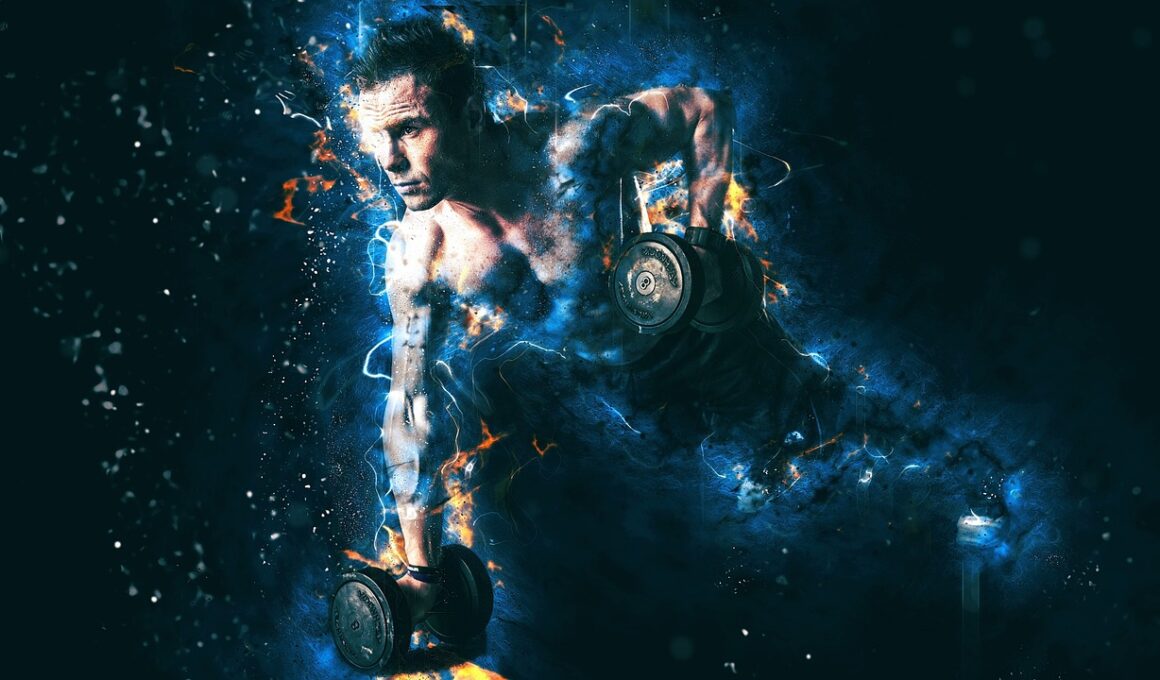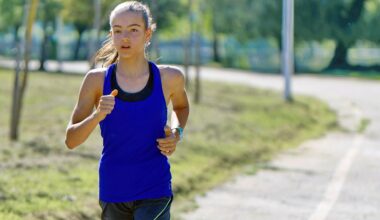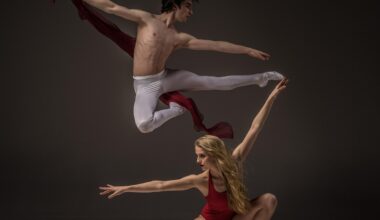How to Manage Low-Light Conditions at Fitness Events
Low-light situations at fitness events present unique challenges for photographers. It is essential to understand how to effectively capture the action without sacrificing the quality of images. Start by adjusting your camera settings appropriately. Increase your ISO to allow your camera to gather more light, but be cautious of excessive noise. A good balance will yield sharp, clear images. Utilizing fast lenses can be beneficial here as well, as they allow more light to hit the sensor. Additionally, a wide aperture will let in more light, contributing to better exposure in dim conditions. Make sure to use a sturdy tripod to stabilize your camera, especially when working with slower shutter speeds that may be required in lower light. Movement in the scene can blur images, so steadying the camera is crucial. Knowing the layout of the event can further help predict when and where action will take place. Practice techniques that enhance light sources like spotlights, which can highlight key participants. Always be prepared to experiment because lighting can drastically change. All these tips will greatly enhance your photographic representations at low-light fitness competitions.
Using external flash might seem daunting, but with practice, it becomes second nature. Remember, the flash should enhance the image, not dominate it. For many situations, using a bounce flash can create a softer and more flattering light. Positioning your flash head towards a ceiling or wall can allow for diffused lighting that mimics natural light. This reduces harsh shadows that can detract from the overall quality of the photo. Additionally, using a faster shutter speed while photographing athletes can effectively freeze motion, giving those action shots valuable clarity. It’s essential to familiarize yourself with your camera’s flash sync speed to avoid unexpected cuts or freezes in your images. Another smart technique is to utilize continuous light sources, like LED panels, which illuminate the subject while preserving more natural light effects. These options can brighten up the scene without overwhelming your lens. Combine these techniques with careful attention to subject composition. Consider framing your subjects against contrasting backgrounds to allow them to stand out better in low-light situations. Such thoughtful compositions can drastically enhance the storytelling aspect of your photographs.
Post-Processing Techniques for Low-Light Photography
Even the best-prepared photographers may need to rely on post-processing to refine images taken in challenging lighting. Software such as Adobe Lightroom or Photoshop offers a wide range of editing tools that can significantly improve your photographs. Start with correcting exposure adjustments, where you can brighten dark areas without overexposing lighter parts. The histogram feature in these programs allows quick visual assessments of your photo’s exposure levels. Utilizing contrast and clarity sliders can also add depth to your images, making them pop. Noise reduction tools are particularly beneficial for low-light images. They help bring back fine details that may have been lost due to high ISO values. Color correction can ensure skin tones appear natural, making your subjects relatable and appealing. Rather than relying solely on auto settings, learn to adjust levels manually, enhancing creative control over your images. Experimenting with cropping can also cut out distracting elements, focusing the viewer’s attention on the action captured. Spending adequate time in post-processing can turn an average photograph into a striking visual narrative of the fitness event.
Always remember that engaging with your subject can lead to better snapshots. When photographing participants, show interest and encouragement. The mood of the event can be captured much more effectively when both photographer and athlete share excitement. Communicating with athletes to understand their routines or emotions can reveal the unexpected moments that make memorable images. Anticipating the peaks of action, whether it is a finish line, weights being lifted, or a particularly challenging maneuver, can help frame your shots more effectively. It’s also helpful to scout the event venue ahead of time. Knowing locations with the best lighting, unique perspectives, and potential vantage points can give you a significant advantage. Each fitness competition is different, presenting various lighting conditions based on venue and available light sources. Preparation allows you to quickly adapt your shooting style, ensuring you capture the best moments throughout the event. Always stay alert and ready, as unexpected moments often lead to the most powerful photographs. Using these strategies will enhance your coverage of fitness events, particularly in settings with low-light conditions.
Gear and Equipment Recommendations
The gear you choose plays a vital role in low-light photography. Invest in high-quality, fast lenses, which can make a marked difference in your images. A lens with an aperture of f/2.8 or wider is ideal for capturing more light and creating beautiful bokeh effects. Using a prime lens instead of a zoom lens can also enhance your low-light capabilities. While zooms can be versatile, fixed primes often outperform in low-light scenarios. Tripods are essential when stabilizing your camera, especially at slow shutter speeds. Consider a monopod for increased mobility, allowing you to move freely amidst dynamic events. The weight and portability of your equipment are important when maneuvering through crowds or within confined spaces. A sturdy camera bag that allows easy access while protecting your gear from the elements helps maintain readiness. In addition to your camera and lenses, using a sturdy external flash will provide backup when ambient light isn’t enough. Explore innovative gear like a light meter to assess available light, guiding your camera settings effectively. Ultimately, invest in the best equipment your budget allows, making the most of your shooting experience at intense fitness events.
Balancing battery life is crucial in low-light conditions, as high ISO settings can drain power quickly. Always charge batteries fully before the event. Carry extra batteries and memory cards since continuous shooting can fill memory quickly, especially in an extensive competition. Remember to regularly check equipment functionality and cleanliness before proceeding to avoid disruptions during the event. During busy events, establishing a portfolio of shots during different lighting conditions can be beneficial as well. Maintaining a versatile shooting style will ensure a comprehensive representation of the event. Consider utilizing user reviews and photography forums to discover tips specific to particular competitions. Engaging with fellow photographers can provide insights you may not have considered before. Maintaining a positive outlook while adapting to shifting lighting conditions can improve your skills and generate impressive work over time. Every low-light fitness event is an opportunity to experiment while capturing the spirit of competition. Embrace the challenge each time, and continue refining your techniques. In conclusion, practicing various methods to manage low-light situations will enhance your effectiveness in photography at fitness competitions.
Conclusion and Further Resources
In conclusion, managing low-light conditions is a vital skill for photographers at fitness competitions. Implementing these techniques can significantly enhance the quality of your images. Resources like online tutorials, photography communities, and equipment reviews offer a wealth of knowledge that can further your understanding. Exploring workshops or local photography clubs can facilitate practical learning as well. Stay committed to refining your skills through practice and feedback, especially in challenging scenarios. Developing a keen eye for detail and composition enables you to capture the emotional intensity and action inherent in sports. By keeping abreast of evolving technologies and techniques in photography, you can continually improve your art. Continue experimenting with settings, gear, and approaches to illuminate the unique aspects of fitness events. The more you engage with different lighting environments, the more adept you will become at telling compelling stories through your images. Always embrace the unique challenges that come with each event, and unleash your creativity. Ultimately, dedication to capturing impressive, impactful images in low-light environments will yield a rewarding journey in photography that resonates through your work.
In summary, learning to manage low-light conditions is an important journey for anyone interested in capturing fitness competitions. It combines technical skill with an artistic flair. Continuously seek opportunities for growth within your photography practice, especially in less than ideal lighting settings. Engaging fully with both technology and the human elements involved will lead to extraordinary photographs that encapsulate the spirit and energy of athletes. Explore various sources continuously to expand your knowledge base including articles, video tutorials, and books dedicated to photography. Ultimately, the goal is developing your style and proficiency, allowing you to document fitness activities authentically. This dual approach of technical understanding paired with creative expression will significantly enhance the visual narrative you can develop at fitness events, especially under challenging lighting. Therefore, invest substantial time in honing these skills while being adaptable and innovative in your techniques. By employing all the concepts discussed, you will successfully manage low-light conditions in diverse scenarios. Bring these skills forward in your photography and discover what unique stories unfold as you capture the essence of athletes in electrifying environments.


